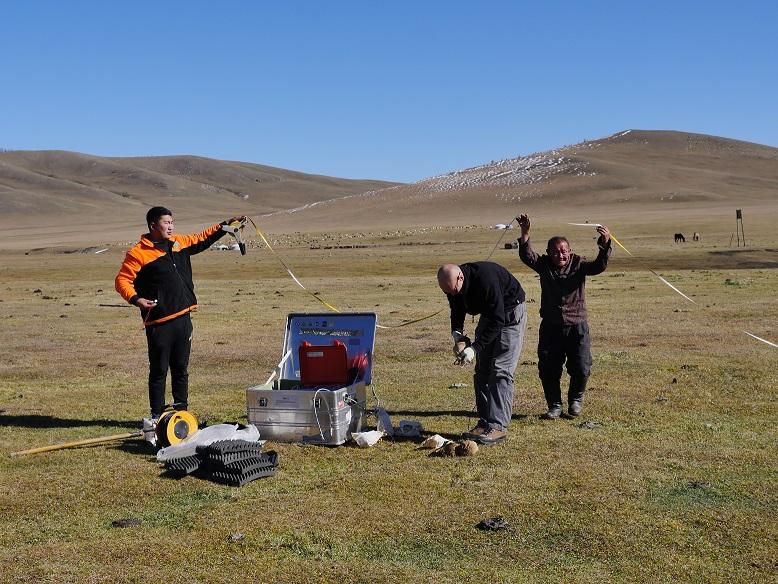Development of a geoscientific framework for geothermal exploration and energy utilization in Mongolia

This project enhances the knowledge about the geothermal resources to facilitate the geothermal development in central Mongolia and to promote the utilization of clean energy and development of in-situ expertise in the field of geothermal energy.
About the project
Background
At the Paris climate conference in December 2015 the United Nations member states agreed on a global action plan in order to limit global warming to well below 2°C. To meet the climate goals, it is required to increase energy efficiency and to substitute fossil fuel, coal and other polluting energy sources with renewable sources of energy. The main objective of this project is to lay the scientific foundation for geothermal exploration and energy utilization in the Mongolian Hangai province. The existence of numerous hot springs in this region is indicative for large geothermal energy resources, which are remnants of the Hangai’s volcanic geological history. Previous studies have shown that a combined, geothermal heat and power plant for Tsetserleg could provide cheap and clean energy. With this project we will introduce the missing geophysical component of the so far conducted geothermal exploration program in the Hangai. We will establish scientific methods to image the geothermal reservoir near Tsetserleg, which feeds the hot springs in Tsenkher and Shivert. The result will be of great importance for promoting the construction of geothermal power plant.
Objectives
Hot rock in the subsurface, a remnant from Hangai’s volcanic history, heats fluids in the underground. Some of the fluids migrate upwards along permeable geological faults, where they result in hot springs as observed in Tsenkher. With this project we train and educate Mongolian scientists in geophysical subsurface imaging for geothermal exploration. Together we will conduct magnetotelluric (MT) measurements during two field campaigns in 2019 and 2020. MT is a geophysical method that is widely used in geothermal exploration. Based on MT data it is possible to construct a 3-D geothermal reservoir model in order to evaluate the potential for heating and energy production. We will use our new MT geophysical soundings for a consistent interpretation together with previously conducted geochemical and geological studies.
Relevance
The capacity of a geothermal CHP plant in Tsetserleg could reach 1.9 MWe power and 16.7 MWt heat production as shown in a study by Purevsurem Dorj from the National Renewable Energy Center in Ulaanbaatar (Dorj, 2005 and 2015). Such a plant would even exceed the current power and heat consumption in Tsetserleg. Geothermal energy could be a great benefit to all inhabitants. It would result in massively reduced greenhouse gas emissions and lead to improved live and working conditions.
Geographic scope
The measurements will be taken at around 200 sites between Tsetserleg and Tsenkher during field surveys in May-June 2019 and 2020. In the first survey we plan to measure on an array with 2km site spacing. In the second survey we will refine our measurement array around the Tsenkher hot springs and around the exploration well near Tsetserleg.
- Mongolia
Project website and link to P3
